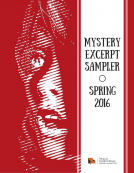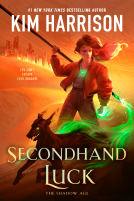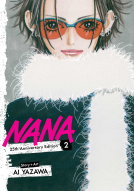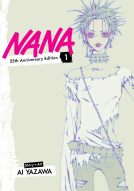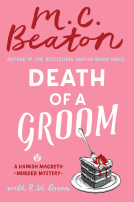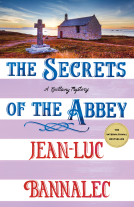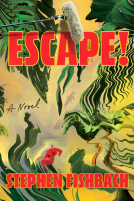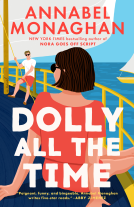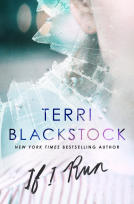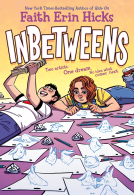
Knitting in the Nordic Tradition
by Vibeke Lind
This title was previously available on NetGalley and is now archived.
Send NetGalley books directly to your Kindle or Kindle app
1
To read on a Kindle or Kindle app, please add kindle@netgalley.com as an approved email address to receive files in your Amazon account. Click here for step-by-step instructions.
2
Also find your Kindle email address within your Amazon account, and enter it here.
Pub Date Jul 16 2014 | Archive Date Nov 06 2014
Description
After a brief look at the historical development of wool into yarn, the Introduction provides tips on using the right tools, following patterns, incorporating designs, and making edgings and decorative borders. Above all, this book offers suggestions for adapting classic patterns to suit individual needs and to express personal tastes. In addition to scores of helpful diagrams, the chatty and informative text is complemented with many photos of finished projects as well as historical images depicting people dressed in these beautiful sweaters, hats, and other forms of wearable art.
Available Editions
| EDITION | Paperback |
| ISBN | 9780486780382 |
| PRICE | $19.95 (USD) |
Average rating from 30 members
Featured Reviews
 Librarian 37033
Librarian 37033
This book is a great overview of the history of Nordic knitting. The graphs of traditional designs provide a spring board for experimentation and design. This is not a modern knitting pattern book but a guide for thinking knitters. Fans of Elizabeth Zimmerman will love it. It gives you the information needed to figure out how to design a sweater or hat of your own. However this is not for beginning knitters as they need a little more hand holding. Even some experienced knit tiers are afraid of steeking, cutting a knitted garment for armholes or a cardigan opening.
 Paula D, Reviewer
Paula D, Reviewer
As a long-time and very experienced knitter, I found this book to be fascinating. This is an interesting reference book on Scandinavian knitting that has been translated into from Danish into English. I think the translation works well - I had not trouble understanding the writing. The book does look as though it was written in the early 80's, which it was. That's fine, since it resembles the style of many of Elizabeth Zimmerman's works. Not everything needs that Rowan mystique.
This book is more along the lines of a reference book for more advanced knitters. This is not a book for beginners! It would figure prominently in knitting research, particularly for historical purposes.
I enjoyed reading the book and learned some things to add to my knowledge of knitting.
 Wendy B, Reviewer
Wendy B, Reviewer
This book got some very reviews on Amazon but I was not too impressed. It isn't a terrible book and there are some good instructions and patterns but all the photos and charts and drawings were in B&W! Nothing was in color except the cover. So that was huge disappointment #1, the next disappointment was that even though there were a lot of patterns, they weren't really anything I would make. So for me, this book was not really "my thing". There are other "basic knitting" books that I have thought were much better.
Take a look, read the other reviews and decide for yourself.
Thank you Netgalley and Dover publications for sending me this e-book for my honest review.
 Reviewer 182646
Reviewer 182646
Lovely book and lovely patterns, especially for the experienced knitter. Recommended!
 Kimberly S, Librarian
Kimberly S, Librarian
Clear illustrations of techniques and stitches as well as wonderful photographs of actual Nordic knitters make this knitting book a welcome addition to any serious knitter's library. There is plenty of information about wool--the best fiber for knitting--from sheep to finished product. It even has instructions for washing a finished Nordic sweater.
 Andree B, Educator
Andree B, Educator
This book turned out to offer much more than I had originally expected. I was expecting a couple of tips on fairisle/colourwork and maybe a few traditional patterns, but this book goes above and beyond that. It provides a wealth of history, various stitches and knitting techniques as well as loads of great patterns. So many of them are very adaptable to current fashion and some are simply timeless.
I only wish it was in colour given that Nordic knitting is so frequently associated with beautiful colourwork.
 Carrie B, Reviewer
Carrie B, Reviewer
Before I took a closer look at Knitting in the Nordic Tradition, I thought that I was going to be checking out a book that would offer patterns on how to knit Nordic styled items, but the book was more than that. The author offered a bit of a historical look into Nordic knitting traditions, and included photographs of samples of knitted items that were discussed. According to the introduction written by Vibeke Lind, the author of Knitting in the Nordic Tradition, the purpose of the book is, "not to give the reader the patterns themselves, but rather to suggest how one can use the models, changing them according to the individual needs and the dictates of fashion...they should be an inspiration to independent judgement of old ideas."
Indeed, examples of Icelandic sweaters, Norwegian louse coats, Norwegian mittens, fulled sweaters from the Faroe Islands are presented in the book. Patterns and charts are offered for some of the items that appear, but they come across as general recipes for creating the knitted items, instead of detailed patterns that will allow the reader to recreate those items exactly as they appear in the book. If knitters are looking for those aforementioned detailed patterns such as the ones that appear in many contemporary knitting magazines and many other knitting books, they will not find them in Knitting in the Nordic Tradition. Vibeke does provide schematics for creating items with diagrams that include measurements, and the charts for some folk motifs, such as the prehistoric Sunwheel symbol (which might not be comfortable for some), Selbu Star, Sheep's Path, and Sea-Wave, are provided, but it is left to the reader to decide how these motifs will appear on any of these knitted items. Generally a lot of decision making in the construction of many of these items is left to the discretion of the knitter. For example, knitters will need to select their own yarn, decide on how many stitches to cast on, and determine how many rows to knit to get to an appropriate length for the item. The gain is that they will get finished items that are very specifically customized for their own purposes.
The book does cover the basics of knitting; the author runs through a quick discussion about wool, the knit and purl stitches, charts, colourwork, openwork, casting on, casting off, steeking, care of knits, and fulling. Besides Icelandic sweaters, louse coats, and mittens, the book also discusses the construction of hats (referred to as caps in the text), socks (referred to as stockings), and shawls. In addition to the black and white historical photos, there are colour photographs of knitted items that were contemporary to the early 1980s.
Knitting in the Nordic Tradition was originally published in 1981 under the title, Strik med Nordisk Tradition, by Vibeke Lind and Host & Sons Forlag. It was translated from Danish into English by Annette Allen Jensen and this version was published by Lark Books in 1984, and then by Sterling Publishing Co. Inc., in 1998. The version that I looked at was published by Dover Publications in arrangement with Sterling Publishing and was released in 2014. The reason why I just wrote about the history of the publication of this book, is because it is a re-release of the English translation, and is not an updated edition, as hinted before by the mention of the photos from the 1980s.
Also, although the translation into English from Danish was quite well done, I found that some vocabulary didn't match what is commonly used in English speaking circles. For instance, in the section about casting on, the casting on method that is called, "One Needle Casting On," is actually commonly known as the Longtail Cast-On, and the method called, "School Casting On," is known as the Cable Cast-On. In the casting off section, the method called, "Knit Casting Off," is what we would call the Three Needle Bind-Off.
Despite these things, I found that Knitting in the Nordic Tradition to be an educational book to read. Until I saw the diagram of a series of regular straight needles with knobs at the end (not double pointed needles or dpns) being used to hold a large number of stitches, I had never considered that as a possible alternative to using a long circular needle to knit an afghan. Also, it was rather thought provoking to consider knitting from a sewing pattern, a suggestion that the author makes, although the reader is cautioned to knit short of the seamline because of the knit work's elasticity. However, the big challenge presented by this book is the encouragement to step out and try one of the pattern recipes and customize a Nordic knit into something that fits the wearer today. Athough Knitting in the Nordic Tradition contains information that would be interesting for a beginning knitter to study and learn, the material would likely be more likely to be tried out and utilized by a knitter at the intermediate level or higher.
Disclaimer: I was given an e-copy of Knitting in the Nordic Tradition from Net Galley in exchange for a review. All opinions stated in this review are mine.
 Renee G, Reviewer
Renee G, Reviewer
I thought that this was a most informative, professionally researched and well presented book. A must for anyone wanting to learn new techniques or expand on their knitting know how.
 Reviewer 151918
Reviewer 151918
Dover Press and I go way back. When I was a university student interested in crafts, Dover books were the only ones I could afford. So I am used to these books being what they are – reproductions of other work. Although Dover sometimes reproduces teaching books, more often Dover books are for reference only. Dover calligraphy books come to mind with their page after page of decorative script with almost no words.
"Knitting in the Nordic Tradition" is a book written by Ms Lind in 1981 and translated from the Danish by Annette Allen Jensen in 1984 and published by Lark Books. Dover has been reproducing several Lark titles recently.
"Knitting in the Nordic Tradition" is an ethnographic work detailing Nordic knitting traditions. It is not intended to be a teaching book. Dover has reprinted it and slapped on an ugly cover.
Even given that this is only a reproduction, Dover could have done a better job. First with the cover, which does not really do justice to the book content. Then with the photos. The photos in the book are copies of older black and white ethnographic type photos and many of them are quite interesting. Others though, should have been cleaned up and sharpened because they are quite dark and hard to see.
Ms Lind uses an old fashioned hand-drawn pattern system that knitters might want to type out in the modern system.
I am not sure that the instructions for fulling will be understood today when we never do it, but fulled sweaters were vital parts of a fisherman's wardrobe.
This is one craft book where the electronic version might be more satisfying than the physical book because in my experience Dover narrow-bound books flip closed while you are trying to use them. The digital version will stay open where you want it.
Oh, and by the way, Louse coat is exactly the right translation. These coats had little white specks on them that looked like crawling lice. The name is still used today.
I received a review copy of "Knitting in the Nordic Tradition" by Vibeke Lind (Dover) through NetGalley.com.
Readers who liked this book also liked:
Colleen Francioli
Cooking, Food & Wine, Health, Mind & Body
Marie Bostwick
Historical Fiction, Literary Fiction, Women's Fiction

